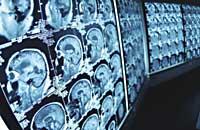Hidden Intentions in
2010/08/15 Aulestiarte Lete, Izaro - Elhuyar Zientziaren Komunikazioa

These are the main conclusions that neuroscientists at the California University of Los Angeles (UCLA) have drawn to the thread of a recent study. The journal Nature Neuroscience has released this data.
In order to know if they were going to use a certain product to protect themselves from the sun, UCLA has carried out an experiment with 20 young men and women. While they were getting images of their brain by resonance, they were made to read and hear messages and ads about the use of solar creams (interspersed with other messages so they didn't see what the research was about).
On the first day, before the resonance session, each volunteer expressed whether he used cream last week, his intentions for the next week and, in general, his stance towards sponsors. After seeing the messages, they had to answer more questions about their intentions. And then they gave them a bag full of products, among which were small solar protection towels. “After a week we did a clandestine follow-up to check if they really used sunscreen,” the researchers explain.
During the experiment, images of the brain of the volunteers were able to contrast the behavior of the subjects for a few days. As well as contrast the intentions raised by each in the questionnaire with subsequent actions. The images were “more accurate”.

The researchers wanted to predict whether they would actually use the solar cream. (Photo: Joe Shlabotnik ) .
The functional magnetic resonance imaging (fMRI) allows you to observe in the experiment the areas of the brain of the volunteers and detect changes in blood flow. The best information for UCLA researchers was provided by a certain area of the brain: medial prefrontal curtains (front of the brain located in the center of the eyebrows). The field is related to the values, preferences and introspection themselves.
According to the researchers, 75% of people who showed greater activity in this brain section had a tendency to use the sun cream. However, among those who responded that they were going to use cream in the questions, this trend was reduced to 50%. “Whatever it is, this cerebral episode helped us predict behavior in three out of four cases. It is surprising that this technique increases the prediction of the intentions and behaviors of each one,” highlighted one of the neuroscientists of the study group.
Neuromarketing Neuromarketing Neuromarketing

Functional magnetic resonance representation can be a useful tool for professionals working with the challenge of motivating consumers. According to UCLA members, the results obtained are so clear that both advertising agencies and health organizations can contribute to taking effective steps in their performance.
The application of brain research techniques to marketing is called neuromarketing. The goal is that the consumer knows (or knows how to interpret) what drives him to buy one thing or another, or to do or not, to know how to influence his mind or perception. Another issue is whether observing the brain with these goals is ethically debatable.
Published in 7K

Gai honi buruzko eduki gehiago
Elhuyarrek garatutako teknologia






